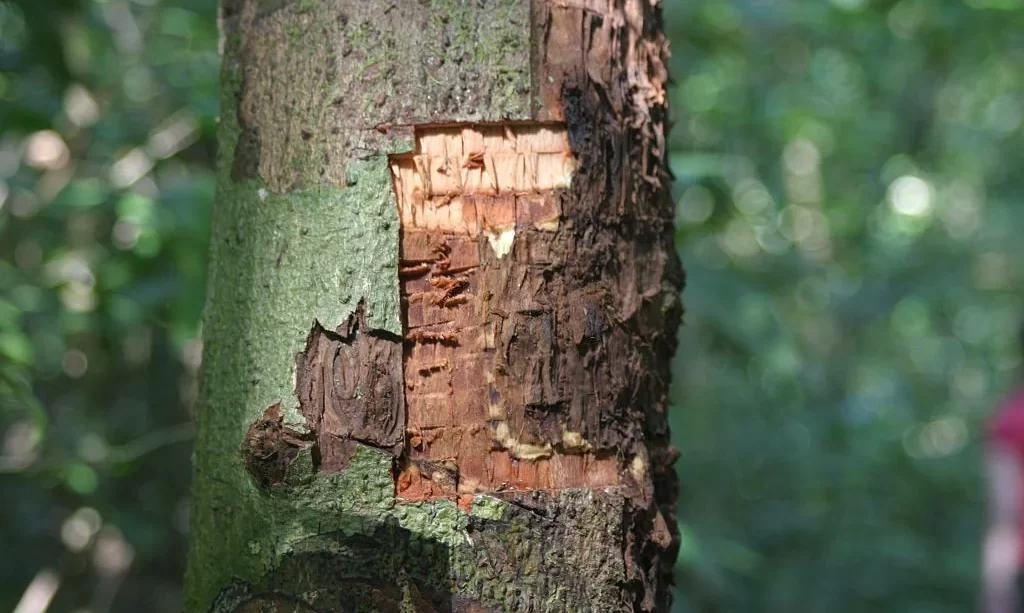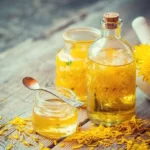Cinnamon, with its warm and aromatic flavor, is a spice that has captivated the senses and tantalized taste buds for centuries. Its presence in our kitchens is as essential as it is comforting, adding depth and richness to an array of dishes, from sweet desserts to savory curries. Yet, amid the appreciation for this beloved spice, a persistent question often lingers: does harvesting cinnamon kill the tree from which it originates?
The Cinnamon Tree
To unravel the mysteries of cinnamon production and its relationship with the tree from which it is derived, we must first acquaint ourselves with the source of this enchanting spice—the cinnamon tree:
Cinnamon is extracted from the bark of several species within the genus Cinnamomum. The two most prominent varieties are Cinnamomum verum, often referred to as Ceylon cinnamon, and Cinnamomum cassia, known as cassia cinnamon. These trees, native to regions such as Sri Lanka, Indonesia, and China, flourish in tropical climates, where they thrive in rich and humid environments.
Cinnamon trees are known for their distinctive evergreen foliage, with elliptical leaves that shimmer in shades of green throughout the year. Their delicate flowers give rise to small, purple berries that, when ripe, contain seeds.
The allure of cinnamon extends beyond the culinary realm. Throughout history, it has been revered for its cultural and medicinal significance. Ancient civilizations, including the Egyptians and Romans, treasured cinnamon for its fragrance, flavor, and purported healing properties. This spice has often been associated with luxury and has even played a role in trade and exploration, motivating journeys to distant lands in pursuit of its aromatic treasure.
Understanding the nature of the cinnamon tree and its habitat is the first step in demystifying the impact of cinnamon harvesting on these remarkable trees. As we delve deeper into the process of cinnamon bark harvesting, we will uncover the secrets behind this age-old practice and its implications for the trees themselves.
Cinnamon Bark Harvesting
Cinnamon’s journey from tree to spice begins with the careful and skilled process of cinnamon bark harvesting. This practice involves the removal of the tree’s outer bark, revealing the inner layers that contain the prized cinnamon flavor:
- The Delicate Stripping Process: Harvesters, often referred to as “peelers”, employ traditional techniques to carefully strip away the outer bark of cinnamon branches. This outer layer, called the “quill”, is removed in long, slender sheets, revealing the layers beneath.
- Revealing the Inner Bark: Once the quill is peeled away, the inner bark of the cinnamon tree is exposed. This inner layer, known as the “cinnamomum”, is what ultimately becomes the cinnamon spice we use in our kitchens.
- Sustainability in Harvesting: Responsible cinnamon bark harvesting practices emphasize sustainability and the preservation of cinnamon tree health. Properly trained peelers ensure that only a portion of the tree’s bark is removed, leaving the tree with the capacity to regenerate.
The Resilience of Cinnamon Trees
Contrary to a common misconception, the practice of cinnamon bark harvesting does not kill the tree. Instead, it reveals the remarkable resilience of cinnamon trees:
- Bark Regeneration: Cinnamon trees possess an extraordinary ability to regenerate their bark. Over time, the outer bark layer naturally renews itself, ensuring the continued health and vitality of the tree.
- Adaptation to Harvesting: Cinnamon trees have evolved to withstand periodic bark removal. They have adapted to this practice, ensuring that it does not result in their demise.
- Ongoing Growth: Even as cinnamon bark is harvested, the tree continues to grow and thrive. New leaves, branches, and bark layers develop, perpetuating the cycle of cinnamon production.
- Sustainable Practices: Sustainable cinnamon farming involves responsible harvesting techniques that prioritize tree health and longevity. Well-managed plantations ensure that bark removal is conducted in a way that does not harm the overall well-being of the tree.
The resilience of cinnamon trees and their capacity to recover from bark harvesting challenges the notion that cinnamon harvesting kills the tree. Instead, this practice underscores the importance of responsible and sustainable cinnamon production, where the preservation of these remarkable trees is central to ensuring a continuous supply of this cherished spice. As we proceed, we will explore the broader implications of responsible cinnamon farming and its impact on cinnamon tree populations and ecosystems.
Sustainable Cinnamon Farming Practices
Responsible and sustainable cinnamon farming practices are essential for preserving the longevity of cinnamon trees and maintaining the quality of the spice. Here, we delve into the strategies that support the well-being of cinnamon trees:
- Selective Bark Harvesting: Sustainable cinnamon farming prioritizes selective bark harvesting. This approach involves removing only a portion of the tree’s outer bark, leaving the rest intact to promote rapid bark regeneration. This careful technique minimizes stress on the tree and ensures its continued health.
- Rotational Harvesting: To further reduce the impact of bark removal, cinnamon farmers often employ rotational harvesting. This practice involves harvesting bark from different parts of the tree or different trees in a plantation on a rotating basis. It allows previously harvested areas to recover fully before they are harvested again.
- Tree Care: Cinnamon farmers provide adequate care to their trees, including regular pruning, fertilization, and protection against pests and diseases. Healthy trees are better equipped to withstand the rigors of bark harvesting.
- Pollinator-Friendly Plantings: In cinnamon plantations, the cultivation of pollinator-friendly plants is encouraged to support local bee populations. These pollinators play a crucial role in ensuring the reproduction of cinnamon trees.
The Impact of Overharvesting
While sustainable practices are pivotal in safeguarding cinnamon trees, the impact of overharvesting on these trees and their ecosystems cannot be ignored:
- Decline in Tree Health: Overharvesting, where bark removal exceeds the tree’s ability to regenerate, can lead to a decline in tree health. Stressed trees become more susceptible to diseases and pests.
- Ecosystem Disruption: Cinnamon trees are part of complex ecosystems that provide habitat and sustenance for various wildlife. Overharvesting can disrupt these ecosystems, affecting biodiversity.
- Preservation Efforts: To prevent overharvesting, various initiatives advocate for responsible cinnamon farming and the protection of cinnamon tree populations. These efforts aim to strike a balance between satisfying the demand for cinnamon and ensuring the conservation of these valuable trees.
Conclusion
In the heart of this exploration lies a reassuring truth: harvesting cinnamon does not kill the tree. Instead, it reveals the remarkable adaptability and resilience of these trees, which have coexisted with humans for millennia, enriching our lives with their precious spice.
Sustainable cinnamon farming practices are the guardians of this delicate balance. By prioritizing tree health, promoting selective harvesting, and fostering responsible cultivation, cinnamon farmers contribute to the continued vitality of cinnamon trees and the preservation of the ecosystems they inhabit.
Yet, as we celebrate the harmony between cinnamon production and tree well-being, we must remain vigilant. Overharvesting, driven by unchecked demand, poses a genuine threat to both cinnamon trees and the environments they call home. The path forward lies in our collective commitment to responsible practices, the protection of biodiversity, and the conservation of this spice’s cherished source.
Cinnamon, as a symbol of warmth and flavor, invites us to savor not just its taste but the wisdom of stewardship, reminding us that the bounty of the earth and the care we take in preserving it are intertwined.




